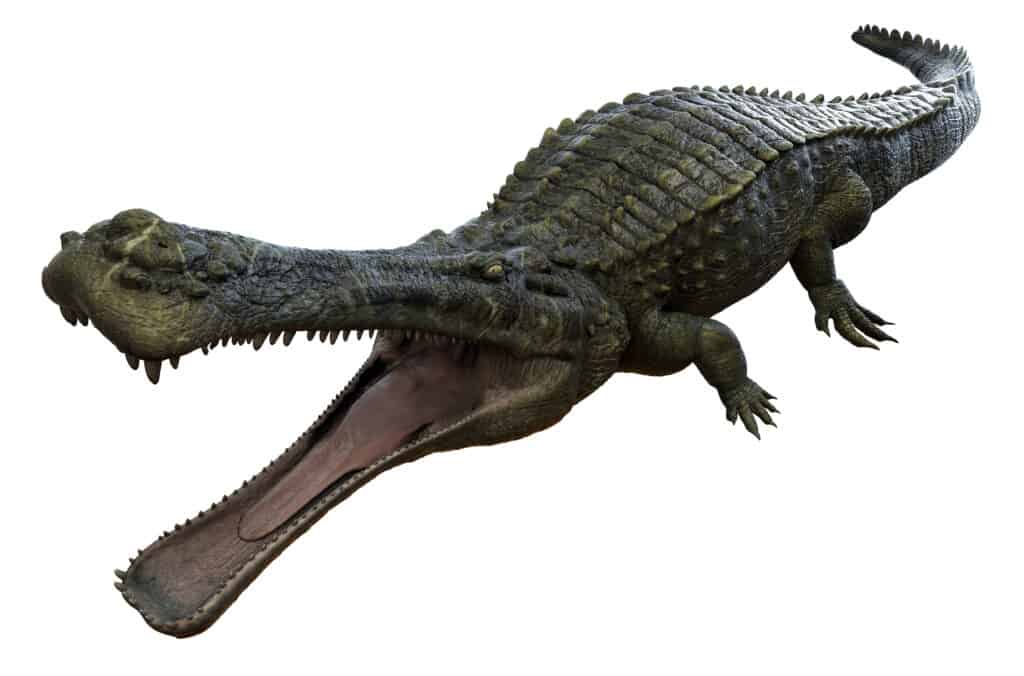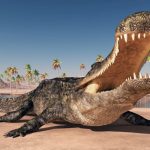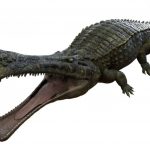“The crocodile cannot turn its head. Like all science, it must always go forward with all-devouring jaws.”
— Some poetic professor
Sarcosuchus is an extinct genus of crocodyliform and distant relative of living crocodilians that lived during the Early Cretaceous, from the late Hauterivian to the early Albian, 133 to 112 million years ago of what is now Africa and South America. It was one of the largest crocodile-line reptiles, reaching an average estimate of 9 m (30 ft) and 3.5 metric tons (3.9 short tons), but estimated to grow up to 9.5 m (31 ft) in body length and weigh up to 4.3 metric tons (4.7 short tons). It is known from two species, S. imperator from the early Albian Elrhaz Formation of Niger and S. hartti from the Late Hauterivian of northeastern Brazil, other material is known from Morocco and Tunisia and possibly Libya and Mali.
The first remains were discovered during several expeditions led by the French paleontologist Albert-Félix de Lapparent, spanning from 1946 to 1959, in the Sahara. These remains were fragments of the skull, vertebrae, teeth, and scutes. In 1964, an almost complete skull was found in Niger by the French CEA, but it was not until 1997 and 2000 that most of its anatomy became known to science, when an expedition led by the American paleontologist Paul Sereno discovered six new specimens, including one with about half the skeleton intact and most of the spine.
How to unlock Sarcosuchus in Jurassic World Camp Cretaceous Collection?
Open up your Jurassic World Play App (previously known as the Jurassic World Facts App), press the Scan button and point it towards the DNA code here:
Jurassic World Massive Biters Larger-sized Sarcosuchus Dinosaur Action Figure with Tail-activated Strike and Chomping Action, Movable Joints, Movie-authentic Detail DNA Scan Code

Name Meaning
Diet
Lenght
Weight
Flesh crocodile
Carnivorous 🥩
9.5 metres (31 feet)
4.7 tons (9,400 lbs)



